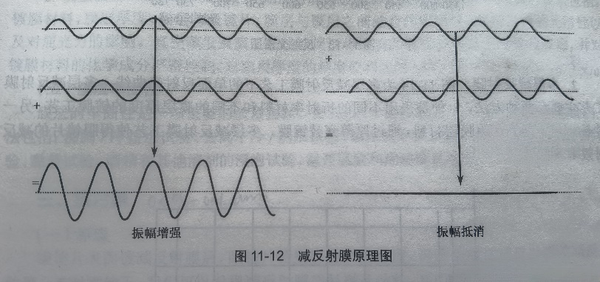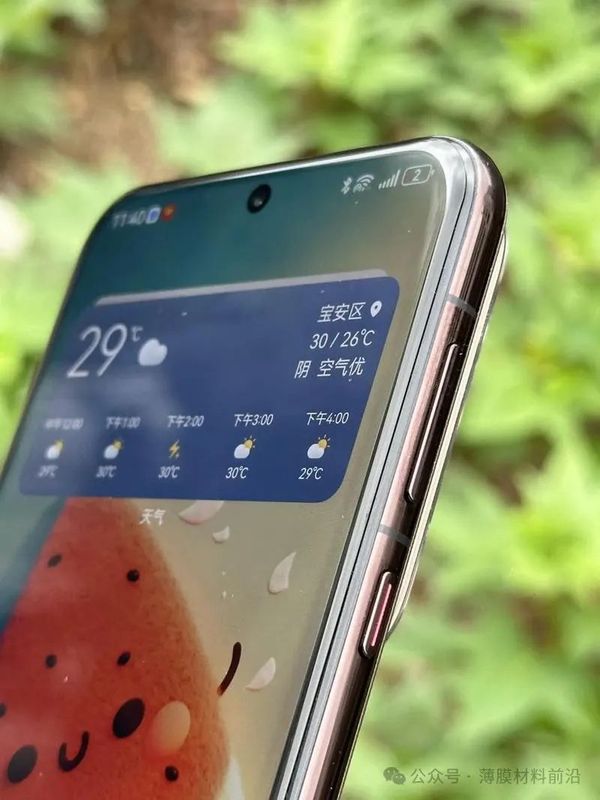Why do mobile phones and lenses need anti-reflective coatings?
Exploring the Multiple Reasons for Using Anti-Reflective Coating on Mobile Phone Lenses
Abstract: This paper focuses on the phenomenon of mobile phone lenses using anti-reflection coatings, conducting an in-depth analysis from multiple dimensions such as optical principles, user experience, phone functionality, and market competition. It reveals the significant role of anti-reflection coatings in enhancing visual effects, improving functionality, and boosting market competitiveness of mobile phones. This not only deepens the understanding of anti-reflection coatings but also provides a theoretical foundation for the further development of mobile phone optical systems.
Keywords: mobile phone lens; anti-reflective coating; optical principles; user experience
I. Introduction
With the popularity of smartphones, people are increasingly demanding better performance and user experience. As a key component for visual interaction between smartphones and the outside world, the optical performance of mobile phone lenses directly affects users' visual experience. Anti-reflection coatings, as an important means to enhance the optical performance of mobile phone lenses, play a crucial role in reducing reflected light and improving light transmittance, and have become an indispensable part of mobile phone lens manufacturing. An in-depth exploration of the reasons for using anti-reflection coatings on mobile phone lenses is of great practical significance for the optimization and upgrading of mobile phone optical systems.
II. Necessity Based on Optical Principles
2.1 Reduce Reflection to Enhance Visual Clarity
When light shines on the surface of a mobile phone lens, reflection occurs due to the difference in refractive index between the lens material and air. The reflected light not only reduces the transmittance of the lens but also creates glare on the lens surface, interfering with the user's vision and affecting visual clarity. Anti-reflective coatings reduce reflection by depositing one or more layers of film with specific refractive indices and thicknesses on the lens surface, utilizing the principle of light interference to cancel out reflected light, effectively reducing its intensity. According to the Fresnel equations, when there is no anti-reflective coating on the lens surface, the reflectance of a glass lens is approximately 4% at normal incidence. With a single-layer anti-reflective coating, the reflectance can be reduced to around 1.5%. With multi-layer anti-reflective coatings, the reflectance can be reduced to less than 0.5%, greatly improving the transmittance of the lens, reducing glare interference, and making the mobile phone screen display clearer.
Why is an anti-reflective coating needed?
Like a flat mirror, light rays reflected when they hit the surface of a lens. This physical property of the lens can cause various problems for the wearer, such as:
1. The reflection on the front surface of the lens affects the wearer's appearance. When others look at the wearer's eyes, they see the reflection on the lens surface; when taking photos, the reflection affects the image.
2. Producing "ghosting." The different curvatures of the front and back surfaces of the lens cause internal reflections, resulting in ghosting phenomena that affect visual clarity and comfort.
3. Glare occurs. The reflection on the surface of the lens creates glare, reducing the contrast of the viewed objects.
4. Reduce light transmittance
Design principles of anti-reflection coatings
Anti-reflection coatings are based on the wave nature of light and the phenomenon of interference. The two most important factors are amplitude and optical path. When two light waves with the same amplitude and the same optical path overlap, the amplitude of the light wave is enhanced; if the amplitudes are the same and the optical paths differ by λ/2, the light wave amplitudes cancel each other out. Therefore, the coating causes the reflected light from the front and back surfaces of the film layer to interfere with and cancel each other out, thereby achieving an anti-reflection effect (as shown in the figure).

1. Amplitude condition: The refractive index of the film material must be equal to the square root of the refractive index of the lens substrate material.
2. Phase condition: The film thickness should be 1/4 of the reference light wavelength.
2.2 Enhance light transmittance and improve color reproduction.
In addition to reducing reflected light, anti-reflective coatings can also enhance the transmission of light, allowing more light to enter the optical system of the phone, thereby improving the color accuracy of the screen. The phone screen displays images by emitting light of different colors, and the presence of reflected light can alter the spectral distribution of the light, leading to color distortion. By optimizing the optical parameters of the coating, the anti-reflective film ensures that light of different wavelengths can pass through the lens with high transmission rates, reducing light loss and spectral distortion. This enables the phone screen to more accurately present true colors, providing users with a more realistic visual experience.
III. Key Factors for Enhancing User Experience
3.1 Reduce ambient light interference and adapt to various scenarios
In daily life, mobile phone users often use their devices under various ambient light conditions, such as under strong sunlight outdoors or in dimly lit indoor environments. In these complex settings, the reflection of light on the surface of the phone's lens becomes more pronounced, significantly impairing the user's ability to view the screen content. Anti-reflective coatings can effectively mitigate the interference from ambient light, allowing users to clearly see the information on their phone screens under various lighting conditions. For example, in direct sunlight outdoors, a phone screen without an anti-reflective coating may be overwhelmed by intense glare, making it difficult for users to see the content. In contrast, a phone equipped with an anti-reflective coating can significantly reduce the impact of reflected light, enabling users to operate their devices with ease. How to choose a good anti-reflective coating
1. Number of layers: A single anti-reflective coating can only be effective for a specific wavelength of light. Therefore, by combining multiple layers of different materials and thicknesses, the range of wavelengths for which the anti-reflective effect is achieved can be broadened.
2. Response angle: ISO (ISO 8980-4 standard) considers the incident direction to be below ±15°, but in reality, light sources come from various angles. Therefore, a good anti-reflection coating can handle light from larger incident angles.
3. Coating Quality: Low light reflectance ratio and fewer influencing factors; stable performance, in compliance with national standards.

4. Market research test, light transmittance: Tv% > 97%
3.2 Alleviate visual fatigue and protect eye health
Prolonged use of mobile phones can lead to eye fatigue, and the reflected light on the surface of the lenses can further exacerbate this fatigue. Reflected light irritates the eyes, causing them to constantly adjust focus to adapt to changes in light, thereby increasing the strain on the eyes. Anti-reflective coatings reduce the intensity of reflected light, minimizing eye irritation and making it more comfortable to view the phone screen, thereby alleviating visual fatigue. Additionally, some anti-reflective coatings also have blue light filtering capabilities, which can block out some harmful blue light, further protecting eye health.
Four, the essential guarantee for meeting mobile phone functional requirements.
4.1 Enhancing Camera Imaging Quality
The camera module is one of the critical functional components of a smartphone, and its imaging quality directly impacts the user's photography experience. If the surface of the camera lens has a significant amount of reflected light, it can cause multiple reflections between the lenses, leading to ghosting and flare, which affect the clarity and color accuracy of the photos. Anti-reflective coating can effectively reduce the reflected light on the surface of the camera lens, increasing the light transmittance, allowing more light to reach the image sensor, thereby enhancing the imaging quality of the camera. Additionally, anti-reflective coating can minimize reflections between the lenses, reducing the occurrence of ghosting and flare, resulting in clearer and more pristine photos.

4.2 Ensuring Proper Functioning of Sensors
Mobile phones are also equipped with a variety of sensors, such as light sensors, proximity sensors, etc. The proper functioning of these sensors is crucial for the implementation of mobile phone functions. Reflected light from the lens surface may interfere with the sensor signals, causing misjudgment or malfunction of the sensors. An anti-reflective coating can reduce the impact of reflected light, ensuring that the sensors can accurately receive external light and signals, thereby ensuring the normal operation of various functions of the mobile phone. For example, the light sensor automatically adjusts the brightness of the phone screen by detecting the intensity of ambient light. If the reflected light from the lens surface interferes with the sensor’s detection, it may lead to inaccurate screen brightness adjustment, affecting the user's experience.
Five, effective strategies for coping with market competition.
5.1 Enhance product differentiation and strengthen brand competitiveness
In the highly competitive mobile phone market, major manufacturers are constantly seeking ways to enhance product differentiation to capture consumer attention. The optical performance of mobile phone lenses, as a crucial factor affecting user experience, has become one of the focal points of competition among mobile phone manufacturers. Phone lenses equipped with anti-reflective coatings can significantly enhance the visual effects and user experience of mobile phones, allowing them to stand out among many competing products. As a result, mobile phone manufacturers are increasingly adopting anti-reflective coating technology to strengthen their product competitiveness and build a strong brand image.
5.2 Meet consumer needs and increase market share
Consumers are paying more attention to the visual effects and user experience when purchasing mobile phones. Anti-reflection films can effectively enhance the optical performance of mobile phone lenses, meeting consumers' demand for clear and comfortable visual experiences. Therefore, by adopting anti-reflection film technology, mobile phone manufacturers can better meet consumer needs and increase their products' market share. In addition, as consumers' health awareness continues to improve, the demand for functions such as blue light protection and anti-fatigue in mobile phone lenses is also increasing. The continuous development of anti-reflection film technology makes it possible to meet these consumer demands.
Section Six: Conclusion
In summary, the use of anti-reflective coatings on mobile phone lenses is necessary for multiple reasons. From an optical principle perspective, anti-reflective coatings can reduce reflected light, enhance light transmittance, and improve color reproduction. From a user experience perspective, they can lower environmental light interference, reduce visual fatigue, and protect eye health. From a functional demand perspective, anti-reflective coatings can enhance camera imaging quality and ensure the proper functioning of sensors. From a market competition perspective, they can enhance product differentiation, meet consumer demands, and strengthen brand competitiveness. With continuous technological advancements and changing consumer needs, anti-reflective coating technology will also continue to develop and innovate, providing stronger support for the further optimization and upgrading of mobile phone optical systems. In the future, the application of anti-reflective coatings in mobile phone lens manufacturing will become more widespread, and their performance will continue to improve, bringing users an even more outstanding visual experience.
【Copyright and Disclaimer】The above information is collected and organized by PlastMatch. The copyright belongs to the original author. This article is reprinted for the purpose of providing more information, and it does not imply that PlastMatch endorses the views expressed in the article or guarantees its accuracy. If there are any errors in the source attribution or if your legitimate rights have been infringed, please contact us, and we will promptly correct or remove the content. If other media, websites, or individuals use the aforementioned content, they must clearly indicate the original source and origin of the work and assume legal responsibility on their own.
Most Popular
-

List Released! Mexico Announces 50% Tariff On 1,371 China Product Categories
-

Nissan Cuts Production of New Leaf EV in Half Due to Battery Shortage
-

New Breakthrough in Domestic Adiponitrile! Observing the Rise of China's Nylon Industry Chain from Tianchen Qixiang's Production
-

Dow, Wanhua, Huntsman Intensively Raise Prices! Who Controls the Global MDI Prices?
-

Mexico officially imposes tariffs on 1,400 chinese products, with rates up to 50%






